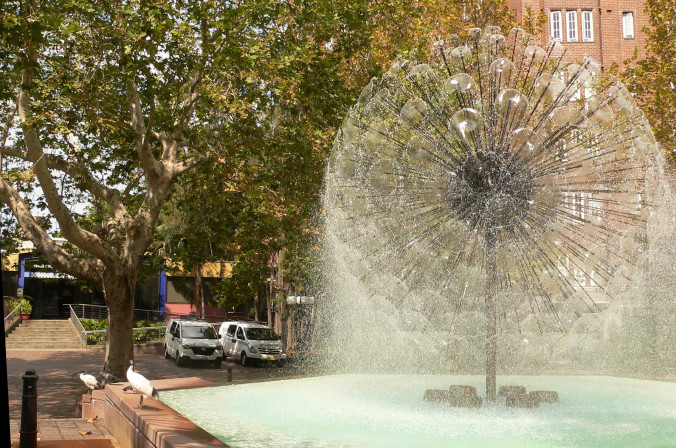Living in Sydney’s inner-city suburb of King’s Cross as I do the dominant tree in the neighbourhood is the deciduous London plane tree. With large maple-like leaves and towering height the London plane is a tree of pump and circumstance. The branches begin high up the trunk so that mature trees have a lofty, architectural quality, giving plenty of shade without restricting the view at street level.
Planted throughout London in the nineteenth century to complement the cities imposing squares and thoroughfares, the plane tree was the ideal symbol for the capital of a growing empire. Visitors watching in awe and envy at the state possessions along plane tree-lined boulevards between Parliament and Buckingham Palace, would have got the message here was the centre of a powerful industrialised country.
However, the plane tree is not merely an immigrant, but one of mixed parentage. It is a hybrid between the American sycamore and the Oriental plane that is native to south-eastern Europe and south-western Asia.
In the heyday of its planting, the London plane grew up along factories – the nineteenth century engines of Empire. But the industrial revolution which harnessed steam power also left London black and sort covered. Few species could survive such an environment, but the London plane that is a specially well adapted to urban life having a special trick that helps at thrive and polluted air.
The bark of the London plane, like that of some other species is dotted with tiny spores a millimetre or two across called lenticels which allow the exchange of gases. If these become lenticels clogged the tree suffers. The ability of the plane to slough off a layer of grime that it has removed from the atmosphere helps keep both this city dweller and its human companions healthy.
City planners around the world have recognised the advantages of the tree for their own cities, and what was originally and almost exclusively a London phenomenon and has spread across the temperate world. Paris, Rome, New York and Sydney.
However, not everyone is a fan of the plane tree. They have been derided by prominent Australian scientist Tim Flannery who called them; “… foreign weeds … about as much use to our wildlife as concrete posts.”.
Household Cavalry walk along the plane tree-lined Mall in London towards Buckingham Palace.
Also the City of Sydney is continuing to loosen its ties with Mother England and is phasing out the many hundreds of London plane trees lining inner city streets, mainly because of the ongoing debate over their role in causing allergies in people susceptible to hay fever.
Sydney is gradually reducing the number of plane trees across the City as they grow old and need replacing with a wider mix of deciduous and evergreen trees, including native species.
Outlining the reason plane trees have been so widely planted by successive Sydney councils, the spokesperson said they were versatile and hardy. However, plane trees will continue to have a place in Sydney as they survive in particularly harsh urban environments, provide shade in summer, cooling footpaths and public places, and lose their leaves during winter allowing in sunlight.
